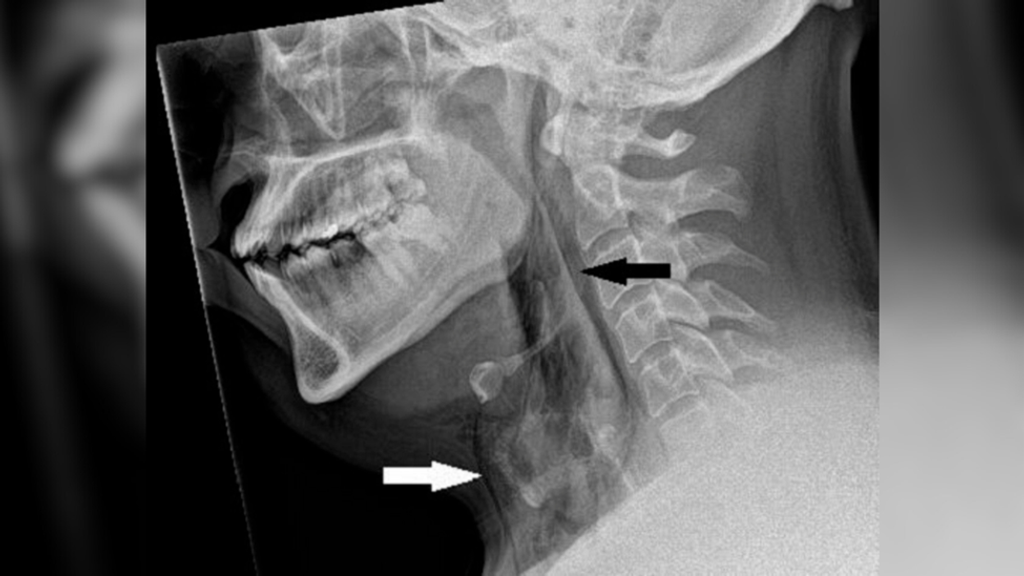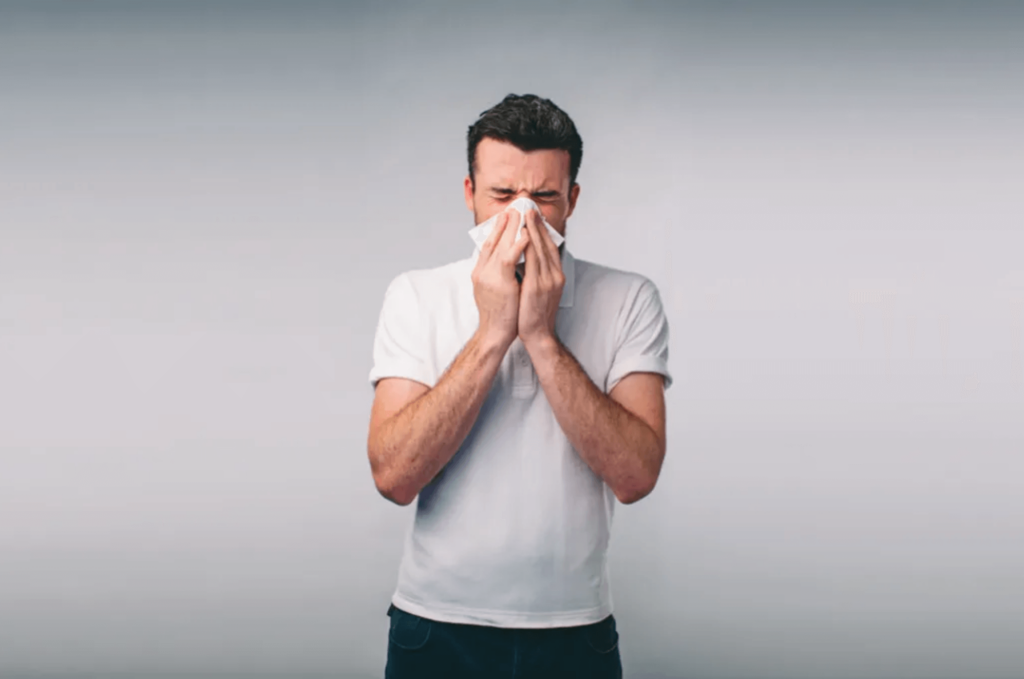In a bizarre and unprecedented medical case, a man had his windpipe tear after attempting to holding in a sneeze while driving. This incident, the first of its kind, highlights the potential dangers of suppressing a sneeze and underscores the remarkable pressures of this common bodily function.
Holding in a Sneeze: The Incident
The 34-year-old man, experiencing hay fever symptoms, felt an overwhelming urge to sneeze while behind the wheel. Instead of allowing the sneeze to occur naturally, he pinched his nose and closed his mouth to suppress it. This action led to an extraordinary pressure buildup within his upper airways, ultimately causing a 0.08-inch by 0.08-inch (2 by 2 millimeter) tear in his windpipe.
Medical Examination and Diagnosis
Upon arrival at the emergency department, the patient presented with severe neck pain, swelling on both sides of his neck, and difficulty moving it. Despite these symptoms, he did not experience any difficulty breathing, swallowing, or talking. A physical examination revealed a faint crackling sound, prompting further investigation.

An X-ray of the man’s neck indicated pockets of air trapped beneath the skin, highlighted by the arrows above. (Image credit: BMJ Case Reports 2023)
A neck X-ray identified surgical emphysema, where air becomes trapped beneath the skin’s deepest tissue layers. A subsequent CT scan pinpointed the tear between the third and fourth cervical vertebrae. Additionally, air had accumulated in the mediastinum, the central compartment of the thoracic cavity.
The Mechanism of Injury
Doctors concluded that the injury was due to a rapid buildup of pressure in the trachea caused by the stifled sneeze. Normally, sneezing can generate pressures up to 10 times higher than normal breathing. In this case, however, the pressure exceeded 20 times the usual amount due to the closed nose and mouth, leading to the windpipe rupture.
Treatment and Recovery
Remarkably, the man did not require surgical intervention. He was admitted for monitoring over two days to ensure stable oxygen levels and other vital signs. Pain relief and hay fever medications were administered, and he was advised to avoid strenuous physical activity for two weeks. A follow-up CT scan five weeks later confirmed complete healing of the tear.
Lessons Learned
While the man sustained relatively minor injuries, this case serves as a crucial warning. The report’s authors, published in BMJ Case Reports, stressed the importance of not stifling sneezes. The high-pressure buildup from pinching the nose and closing the mouth can lead to severe and potentially life-threatening injuries, such as tracheal perforation.
Rare but Serious
Spontaneous windpipe tears are exceedingly rare and typically result from physical trauma or medical procedures like thyroid surgery or tracheal intubation. Surgical repair is often necessary, depending on the location and severity of the tear. This case is a stark reminder that everyday actions, like suppressing a sneeze, can have unexpected and serious consequences.
Conclusion
This unusual case underscores the importance of allowing natural bodily functions without interference. For medical professionals, it highlights the need for awareness and patient education about the potential risks of common practices like stifling sneezes. While rare, the possibility of spontaneous windpipe rupture should be considered in patients presenting with similar symptoms and a history of suppressed sneezing. Prevention and early intervention are key to ensuring patient safety and well-being.
Disclaimer Statement: This information is from a third-party health news channel. The opinions expressed here belong to the respective authors/entities and do not reflect the views of Docquity. Docquity does not assure, endorse, or vouch for any of the content and bears no responsibility for it in any way. It is essential to take all necessary steps to ensure the information and content provided are accurate, current, and verified. Docquity disclaims any express or implied warranties related to the report and its contents.
References
In world’s 1st known case, man tears windpipe from holding sneeze [Internet]. Accessed on June 26, 2024. Available from: https://www.livescience.com/health/in-worlds-1st-known-case-man-tears-windpipe-from-holding-sneeze
About Docquity
If you need more confidence and insights to boost careers in healthcare, expanding the network to other healthcare professionals to practice peer-to-peer learning might be the answer. One way to do it is by joining a social platform for healthcare professionals, such as Docquity.
Docquity is an AI-based state-of-the-art private & secure continual learning network of verified doctors, bringing you real-time knowledge from thousands of doctors worldwide. Today, Docquity has over 400,000 doctors spread across six countries in Asia. Meet experts and trusted peers across Asia where you can safely discuss clinical cases, get up-to-date insights from webinars and research journals, and earn CME/CPD credits through certified courses from Docquity Academy. All with the ease of a mobile app available on Android & iOS platforms!







